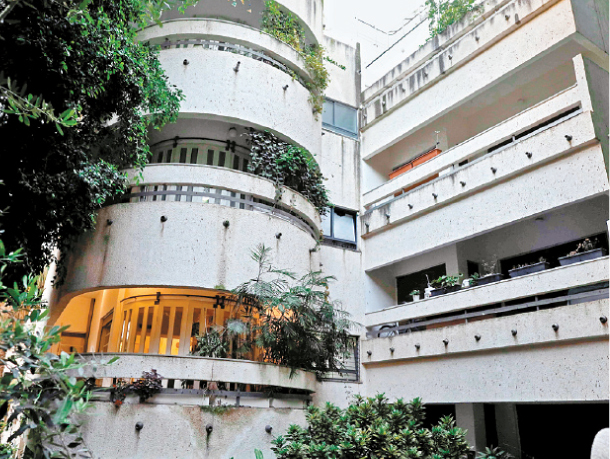As Bauhaus marks 100 years, Tel Aviv’s White City stands proud

The Rubinsky House in Tel Aviv was built by architect Abraham Markusfeld in 1935 in the Bauhaus style. [AFP/YONHAP]
Practitioners of the minimalist architectural movement, founded in Germany a century ago, were among European Jews who fled to British-ruled Palestine when the Nazis took power. Today Tel Aviv is a leading repository of the modernist style that celebrates its 100th year in 2019.
Bauhaus and its variations are prominent among the 4,000 buildings which make up what is known as Tel Aviv’s White City, a Unesco World Heritage site. The name comes from the white-painted facades, which together with rounded balconies epitomise the Bauhaus style.
The Bauhaus design school was founded in Weimar, Germany, by Walter Gropius in April 1919, exactly a decade after Tel Aviv was born as a small seaside village on sand dunes near the ancient Mediterranean port of Jaffa. Driven out by the Nazis in 1933, Bauhaus is part of the modernist movement that had emerged in the 1920s.
In a break with the past, it favoured a functional aesthetic and the use of glass, steel or concrete.
On the streets of Tel Aviv, a group of about 30 from Germany, Austria, Switzerland and Sweden were on a walking tour organized by the Bauhaus Center, which is headed by co-founder Micha Gross.
The Swiss psychologist and architecture enthusiast told AFP that no other city in the world has a larger collection of Bauhaus buildings than Tel Aviv. Unesco says that the master development plan was the work of Britain’s Sir Patrick Geddes, a leading modernist. “Tel Aviv is his only large-scale urban realization,” its World Heritage website says.
The first stop on the Bauhaus Centre tour was Shulamit Square, just off Tel Aviv’s central Dizengoff Street. With its sleek, rounded buildings, the site embodies the way Bauhaus shaped the city with its ethos of seeking to create homes for all social classes.
Unlike their predecessors who built for the German climate, the architects who settled in Tel Aviv had to adapt their work to the local climate. They used less glass to minimize heat and incorporated balconies to catch the sea breezes.
Another stop was at nearby Dizengoff Square, a city landmark dominated by prominent Bauhaus buildings, including the immaculate white Hotel Cinema.
Gross says that while the number of visitors to the Bauhaus Center has tripled in recent years, the White City is more of an impulse destination than Jerusalem and its holy sites, which every year attract millions of visitors.
AFP










with the Korea JoongAng Daily
To write comments, please log in to one of the accounts.
Standards Board Policy (0/250자)